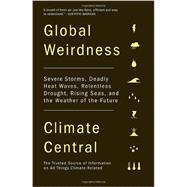
Note: Supplemental materials are not guaranteed with Rental or Used book purchases.
Purchase Benefits
What is included with this book?
This book was produced collectively by scientists and journalists at Climate Central, a nonprofit, nonpartisan science and journalism organization. The book was written by Emily Elert and Michael D. Lemonick; prior to external scientific peer review, it was reviewed by staff scientists Philip Duffy, Ph.D. (Chief Scientist), Nicole Heller, Ph.D. (ecosystems and adaptation), Alyson Kenward, Ph.D. (chemistry), Eric Larson, Ph.D. (energy systems), and Claudia Tebaldi, Ph.D. (climate statistics).
The New copy of this book will include any supplemental materials advertised. Please check the title of the book to determine if it should include any access cards, study guides, lab manuals, CDs, etc.
The Used, Rental and eBook copies of this book are not guaranteed to include any supplemental materials. Typically, only the book itself is included. This is true even if the title states it includes any access cards, study guides, lab manuals, CDs, etc.